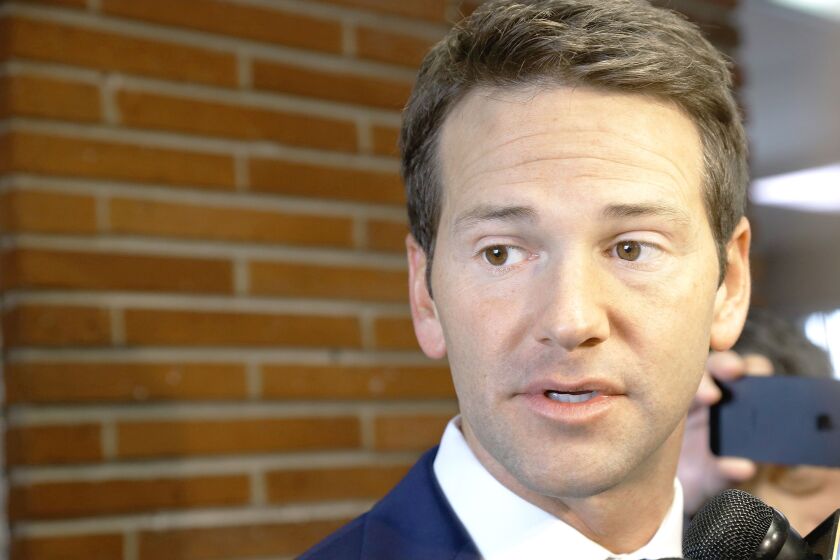A family of four living in Cook County and making $50,000 would pay about $22 more a month next year for the lowest available health insurance premium through President Barack Obama’s health care law than they did this year.
A 25-year-old nonsmoker making $25,000, meanwhile, would pay only $8 more each month compared to last year, while a 44-year-old woman who makes too much to qualify for tax credit would pay $40 more a month.
Now that HealthCare.gov is open for “window-shopping” for the 2015 insurance plans available in Illinois through the Affordable Care Act, the Chicago Sun-Times looked at a few hypothetical consumers in Cook County to get a sense of how 2015 insurance prices compared to 2014.
The open enrollment period for people looking to purchase health insurance plans — with the help of tax credits — starts Nov. 15 on the Affordable Care Act’s online marketplace.
But the U.S. Department of Health and Human Services gave Illinoisans a chance to start seeing what would be available on HealthCare.gov starting Monday. The premiums listed on the website are only estimates based on basic information.
Because prices vary based on a person’s age, where they live and their family size, the Sun-Times looked at insurers’ offerings for three hypothetical people: a single 25-year-old male making $25,000, a 44-year-old woman making $35,000 and a family of four — adults ages 40 and 35 — with two kids younger than age 18 making $50,000.
There was no way last year to indicate whether a person smoked or not, so all of the hypothetical people are nonsmokers. Under rules of the Affordable Care Act, in Illinois and most other states, insurers can charge smokers and other tobacco users as much as 50 percent more on their premiums because of the higher health risks they face compared to people who don’t use tobacco.
According to HealthCare.gov, a family of four could be eligible for $145 a month in tax credits, which would make the lowest price available for them $187 a month. Without a tax credit, they would pay $332.
That plan, Blue Cross and Blue Shield of Illinois’ Blue Choice Bronze PPO 006, also was the lowest price for them this year, costing $165 a month with the help of a tax credit.
The lowest price premium that the 25-year-old could find, meanwhile, was $106 a month for Blue Cross and Blue Shield’ Blue Choice Bronze PPO 006, when a $27.55 a month tax credit is factored in. Without that premium, he would pay $133.55.
That same plan — also the lowest for that person in 2014 — would have cost $98 a month with the help of a tax credit.
HealthCare.gov told a 44-year-old, single woman making $35,000 that she might not qualify for a tax credit. She would, therefore, have to pay $186 a month in 2015 for the lowest premium available on the marketplace, compared to $146 a month in 2014, when she also didn’t qualify for tax credit.
Because the lowest-priced plan was the same for both 2015 and 2014 with all three hypothetical people or families, the deductibles and out-of-pocket amounts they would be responsible for didn’t change.
The Illinois Department of Insurance has noted, though, that some of the lowest-priced silver plans in 2015 may not be the same as the plans that had that distinction in 2014. And it, along with other experts, urged people who bought a 2014 plan to examine the new plans that are available — even though they would automatically be enrolled in the same plan if they did nothing.
The number of insurance plans offered for next year will be more than 410 — more than double the 165 offerings available in 2014, the state has said. And three more insurers than last year will be part of the marketplace this year.
Last week, the department issued a report saying that overall, premiums for the lowest-cost silver plans would see an average premium increase of just 2.6 percent across the state. Most Americans signed up for silver plans last year.
Individuals and families making 133 percent to 400 percent of the federal poverty level are supposed to get a tax credit that helps them pay their premiums, if purchased through the marketplace on HealthCare.gov.
There is some question about the legality of those tax subsidies. But the Obama administration has said that consumers would continue getting tax credits while those cases are reviewed.
Though HealthCare.gov now gives consumers some sense of prices, including the amount of deductible and out-of-pocket they might pay, no information was yet available on what each plan offered for that price, such as how many doctors were available. Experts have said that also is important for consumers to take into account when considering a plan.
The 2015 open enrollment period will be from Nov. 15 to Feb. 15.
In other news, a report released Monday by the Department of Health and Human Services estimated that 9 million to 9.9 million paying customers will enroll for subsidized private coverage in 2015.
That’s significantly lower than the 13 million the Congressional Budget Office had projected earlier this year.
Critics are bound to accuse the White House of moving the goal posts. “Obamacare” remains unpopular in much of the country, and Republicans will keep crusading for its repeal when they assume full control of Congress next year.
At least one independent nonpartisan expert said either number could turn out to be valid.
“An estimate of 9 million enrollees is just as plausible and defensible as an estimate of 13 million,” said Larry Levitt of the Kaiser Family Foundation. On one hand, Levitt said, the law’s mandate that most Americans get covered or risk fines would argue for a bigger number. On the other hand, “There has never been a program as controversial and politically divisive . . . which could dampen how quickly enrollment grows,” he added.
Contributing: Staff Reporter Art Golab, Associated Press





